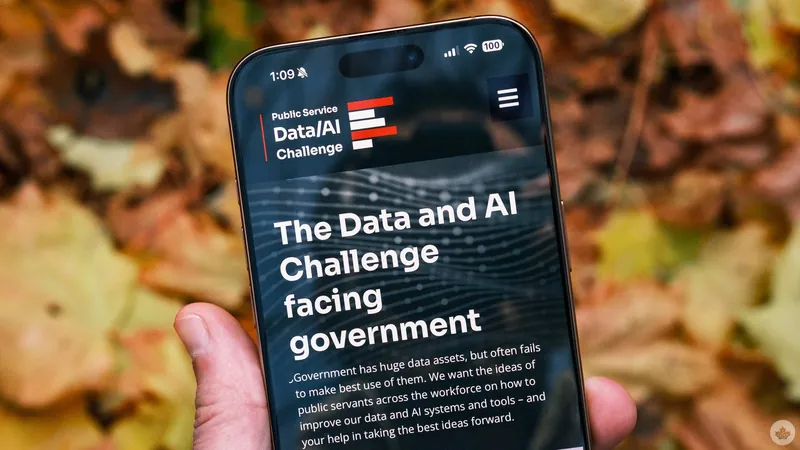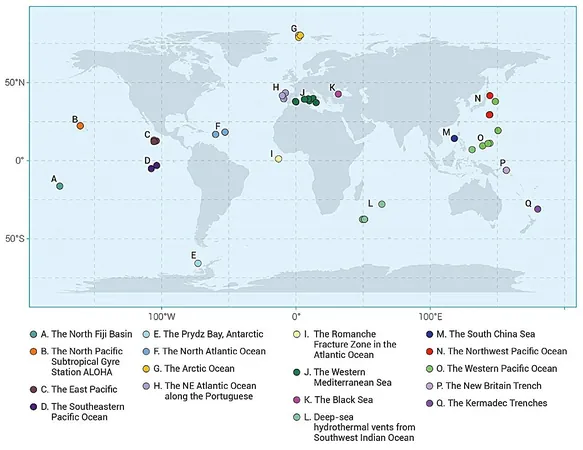
Revolutionary Tech: How Vera Rubin Observatory Will Uncover the Secrets of Interstellar Objects!
2024-12-02
Author: Olivia
Introduction
For centuries, humanity has looked up at the night sky, yet we've only identified two confirmed interstellar visitors: 'Oumuamua (1I/2017 U1) and 2I/Borisov. The first, discovered in 2017 thanks to the Pan-STARRS telescope, showcased a unique trajectory and rapid movement through our solar system, while the latter, 2I/Borisov, surprised astronomers by entering from above the orbital plane, marking a rare cosmic event.
The Rarity of Interstellar Objects
Despite their rarity, experts believe interstellar objects are common in our galaxy. It's estimated that numerous interstellar travelers make their way through our solar system each year, with potentially thousands lurking beyond Neptune's orbit at any given moment. However, they often go unnoticed because their appearances are too faint and subtle.
Introducing the Vera C. Rubin Observatory
Enter the Vera C. Rubin Observatory, set to begin operations in 2025. Unlike traditional telescopes that focus on specific celestial targets, this innovative observatory will capture a vast area of the sky in stunning detail—about seven times the size of the moon in just one shot. With the capability to gather over a petabyte of data each night, the observatory will provide astronomers a treasure trove of images highlighting solar system bodies every few days.
The Challenge of Data Interpretation
This wealth of data presents an invaluable opportunity for tracking even the faintest interstellar objects. Their orbits, once detected, can reveal their cosmic origins. However, filtering through this monumental influx of data poses a significant challenge. While astronomers can easily identify phenomena like supernovae or variable stars, interstellar objects may initially look like ordinary asteroids or comets in the photographs. It will take months or years of tracking to unveil their true celestial lineage.
Harnessing Machine Learning
To tackle this challenge, a study highlighted in Astronomy & Astrophysics suggests harnessing the power of machine learning. Researchers created a simulated database of solar system entities, some following typical orbits and others tracing interstellar paths. They trained algorithms to differentiate between them, leading to fascinating findings.
Promising Results from Machine Learning
Notably, the Random Forest and Gradient Boosting machine learning methods emerged as standout solutions, effectively classifying and detecting interstellar objects with minimal false positives. Surprisingly, the more widely recognized Neural Network approach yielded less effective results.
Looking Ahead
The promising outcome shows that machine learning could successfully unveil hundreds of interstellar objects within the first year of the Vera Rubin Observatory's operations, paving the way for deeper insights into these cosmic anomalies. This new frontier in astronomical discovery could transform our understanding of these mysterious visitors, offering a glimpse into the vastness and history of our universe.
Conclusion
Prepare for a future where we finally decode the hidden messages being sent our way from the stars!









 Brasil (PT)
Brasil (PT)
 Canada (EN)
Canada (EN)
 Chile (ES)
Chile (ES)
 España (ES)
España (ES)
 France (FR)
France (FR)
 Hong Kong (EN)
Hong Kong (EN)
 Italia (IT)
Italia (IT)
 日本 (JA)
日本 (JA)
 Magyarország (HU)
Magyarország (HU)
 Norge (NO)
Norge (NO)
 Polska (PL)
Polska (PL)
 Schweiz (DE)
Schweiz (DE)
 Singapore (EN)
Singapore (EN)
 Sverige (SV)
Sverige (SV)
 Suomi (FI)
Suomi (FI)
 Türkiye (TR)
Türkiye (TR)